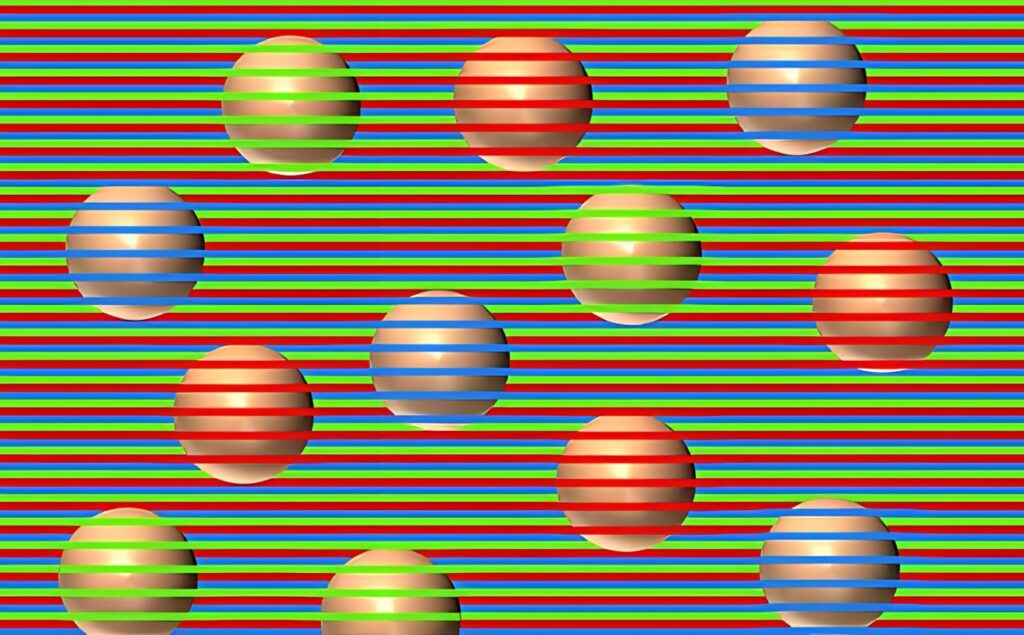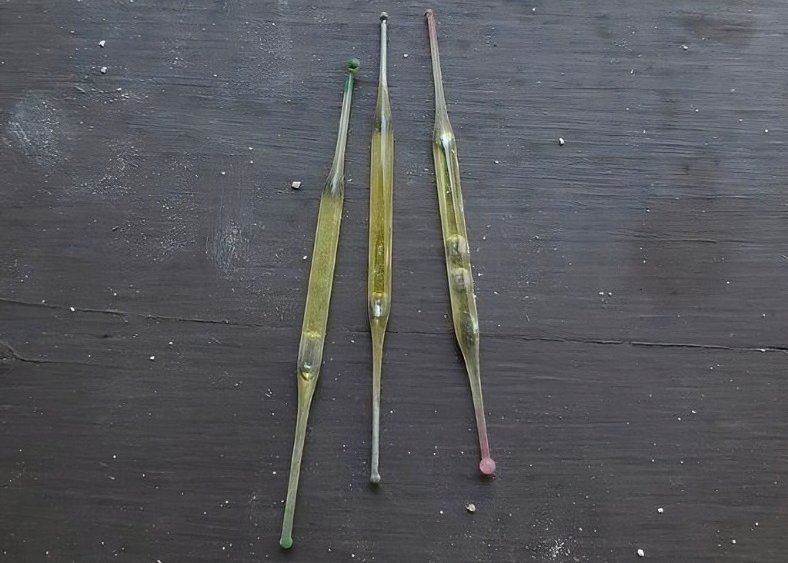Welcome to the fascinating world of optical illusions, where what you see isn’t always what you get. Today, we delve into a captivating example that challenges our perception of color—spheres that appear distinctly colored but are, in fact, all the same shade. Let’s uncover the science behind this illusion and the tricks our brains play on us.

The Illusion Unveiled
At first glance, the image presents a series of spheres adorned in varying hues—reds, purples, and greens floating against a backdrop striped in vibrant colors. However, the truth behind this visual spectacle is quite different. Each sphere is actually the same color: a nondescript beige. This surprising revelation comes from David Novick, a professor of engineering and leadership education at the University of Texas at El Paso, who crafted this illusion to demonstrate how our visual perception can be easily misled.
Mechanics of the Color Deception
The illusion operates on a principle where our eyes and brain misinterpret the colors of objects based on their surrounding hues. This phenomenon is particularly pronounced in “Confetti Spheres 5,” where horizontal stripes of green, red, and blue traverse the image. These stripes influence how we perceive the color of the spheres due to a concept known as color assimilation.
Scientific Insights into Color Perception
Color assimilation suggests that the colors of objects can shift toward the colors around them. In the context of this illusion, the beige spheres adopt the shades of the intersecting stripes. Novick explains that our ability to discern shapes is more refined than our color perception. Hence, while the spherical shape is clear, its color becomes skewed, blending into the stripe colors.
Photoshop Experimentation and Insights
When the stripes are removed using Photoshop, the illusion collapses, revealing the true beige color of the spheres. This simple test underscores how integral the stripes are to the illusion. Further exploration in black and white still yields illusions, demonstrating that our brains can be tricked even without color, relying solely on variations in lightness and darkness.
Historical Context and Further Developments

The roots of this optical trickery can be traced back to the 1960s with psychologist Michael White, and later, Hans Munker, who explored similar effects. Today, researchers like Novick and Akiyoshi Kitaoka are pushing the boundaries by applying these principles to three-dimensional objects and comparing them to flat versions, exploring which elements enhance the illusion’s effectiveness.
Practical Applications and Continued Exploration
These illusions are not just scientific curiosities but have practical implications in design, art, and visual media, where understanding perceptual tricks can lead to innovative visual creations. Novick’s ongoing experiments with color pairings and background patterns continue to reveal new ways to manipulate visual perception effectively.
The Lasting Fascination with Optical Illusions

Why do these illusions captivate us so? They remind us that our perception of reality is constructed in our minds, pieced together from visual inputs that are not always as accurate as we believe. By studying these illusions, we not only gain insights into human cognition but also appreciate the complexity and wonder of our sensory experiences.
In conclusion, the uniform color of the spheres in “Confetti Spheres 5” serves as a stark reminder of the quirks in our visual system. This illusion, a blend of art and science, invites us to question what we see and encourages us to explore the limits of our perception. As we continue to uncover the mechanisms behind such phenomena, we deepen our understanding of the human brain and its intricate processes in deciphering the world around us.





